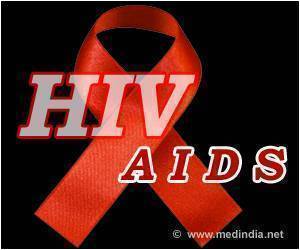
Pre-exposure prophylaxis (PrEP) reduces the risk of sexually transmitted HIV infection by up to 99%. The uptake of PrEP seems to be affected by public health messaging that creates a stigma around its use. While the potential mismarketing of the drug is well-documented and thoroughly researched, studies have examined the factors that could influence PrEP users perceptions of stigma.
Traditional research often highlights the attitudes of stigmatizers, focusing on their perceptions and behaviors. However, a novel study from Northwestern University shifts this focus, examining the experiences and perceptions of stigmatized people (1✔ ✔Trusted Source
A Memo on Factors Associated with Perception of Stigma Attached to PrEP: Evidence from the Keeping It LITE Study
).
This research brings attention to how individuals using Pre-exposure Prophylaxis (PrEP) navigate stigma, particularly around assumptions of promiscuity (multiple sexual relations) and HIV status.
Stigma is a widespread issue caused by negative stereotypes and attitudes toward people with certain traits, including those with diseases. Patients are stigmatized by family members, physicians, the general public, and the media. They are known as stigmatizers.
Advertisement
Perceived Stigma Among PrEP Users
Among PrEP users, there is a widespread fear that using the medication exposes them to discrimination, even when they are aware of others who also use it.
The study, published in the journal Sexes, examines the reasons for self-stigmatization and proposes strategies to address this issue. These strategies are recommended to the Centers for Disease Control and Prevention, which aims to reduce new HIV infections in the United States by 90% by 2030.
“We are among the first to explore the perception of stigma attached to PrEP use among current PrEP users,” said quantitative researcher Shahin Davoudpour, the study’s first and corresponding author.
“Typically, stigma-focused studies pay attention to stigmatizers rather than the stigmatized. Our findings are also novel as they show higher stigma perception among PrEP users — the group who we would expect to express the least stigmatizing behavior.”
Advertisement
Shifting Focus to PrEP Users Rather Than the Stigmatizers
Unlike stigma or discrimination on their own — which have been the topics of previous research — perceived stigma is a powerful social motivator, defined as the anticipation or fear of being discriminated against.
By looking at the stigmatized rather than stigmatizers, the scientists hoped to gain better insight into why uptake of the medication has been slower than anticipated, as well as why PrEP users tend to be inconsistent in taking it.
Perceived stigma can be driven by several factors, often stemming from broader societal biases and misinformation about sexual practices and HIV risk.
Davoudpour’s team examined two common measures of perceived stigma in PrEP use:
- The assumption that PrEP users are seen as promiscuous
- The perception that people who use PrEP are HIV-positive
The study used data from the baseline survey of an online study (which enrolled participants between 2017 and 2019) of a racially diverse population of over 3,000 sexual minority men, trans men and women, and non-binary individuals in the U.S.
The “Keeping it LITE Study” collected data about PrEP use, persistence, and attitudes, which the team ran through models to assess several stigma factors.
Davoudpour called the findings “significant and counter-intuitive,” including the conclusions that the perception of stigma associated with PrEP remains high among PrEP users and that that perceived stigma is not significantly reduced by knowing others who use PrEP.
“Current PrEP users are more likely to believe that PrEP users are promiscuous — a stigma marker — than those who have never used the medication,” Davoudpour said.
Advertisement
PrEP Messaging Strategies
“PrEP was initially promoted for individuals most vulnerable to HIV — especially those with multiple sex partners and inconsistent condom use — thus its use has been inexorably tied to promiscuity,” said study co-author Gregory Phillips II, an associate professor at Feinberg.
“However, PrEP can benefit a variety of people, including those in monogamous serodiscordant relationships (one partner is HIV-positive and the other is HIV-negative), but current messaging doesn’t reflect the broader array of potential PrEP users”.
Current marketing campaigns involving HIV preventatives tend to repeatedly highlight the benefits of PrEP. Instead, the authors argue, “public health messaging can shift its focus to decreasing the perception of PrEP stigma among those vulnerable to HIV” via sex-positive messaging that disconnects PrEP from promiscuity and emphasizes its use among vulnerable populations.
Reference:
- A Memo on Factors Associated with Perception of Stigma Attached to PrEP: Evidence from the Keeping It LITE Study – ( https://doi.org/10.3390/sexes5030023)
Source-Eurekalert



